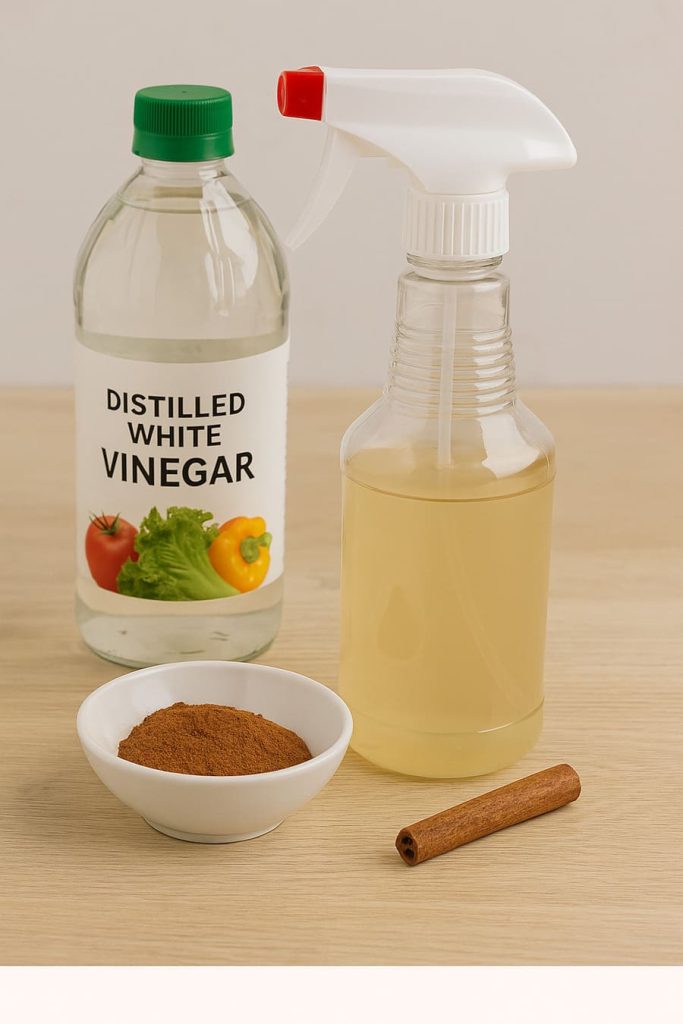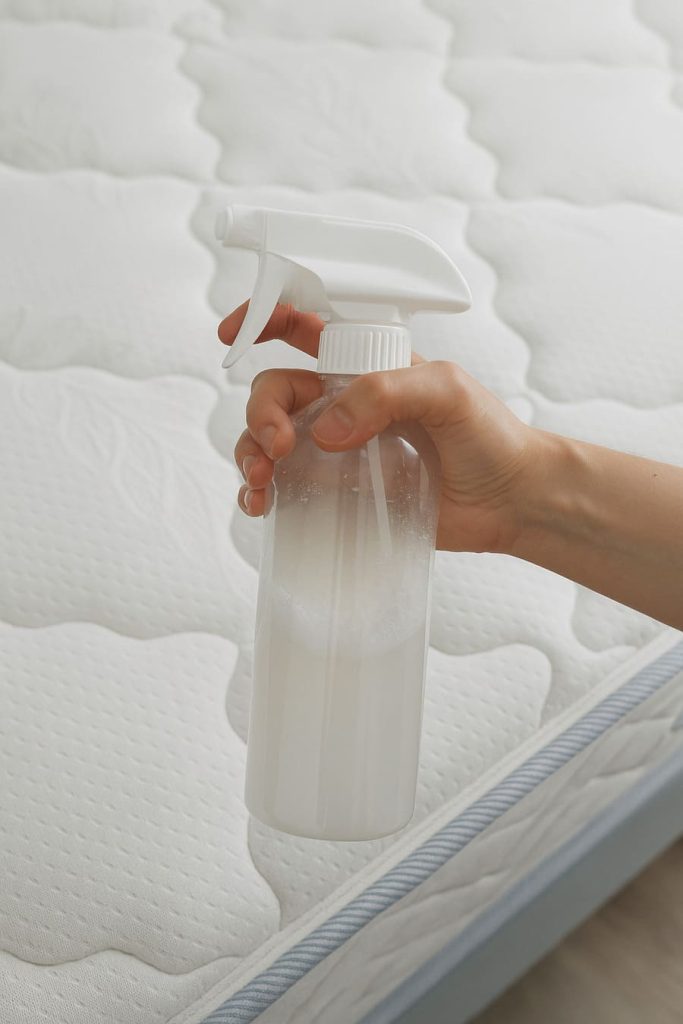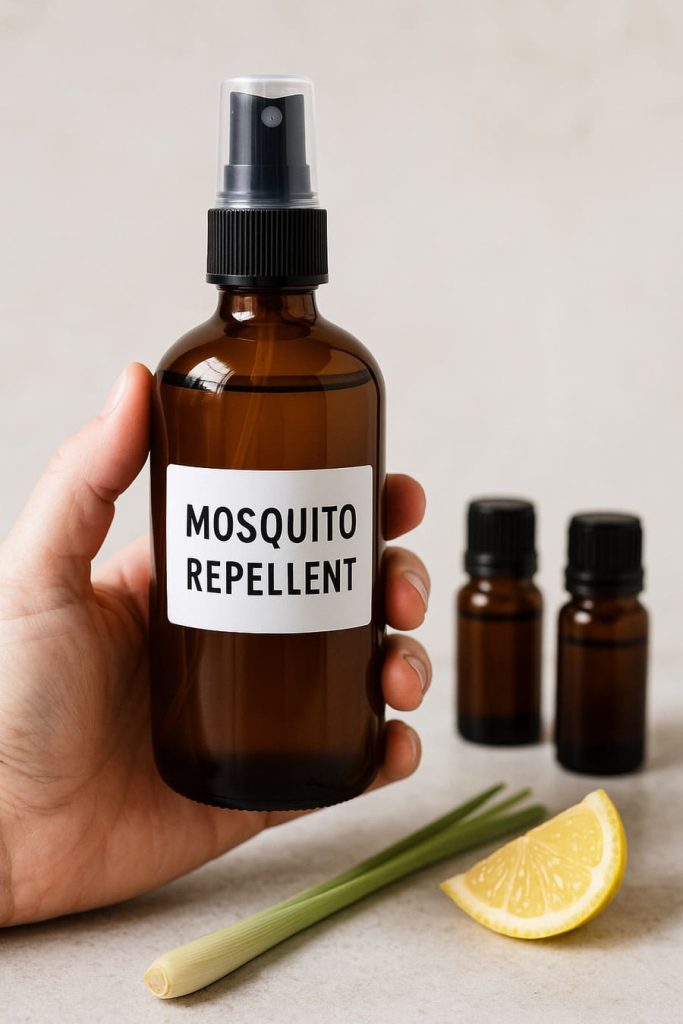You can eliminate pests in your home with insect sprays, or insect repellents, that you can make yourself at home with basic pantry items.
These DIY bug-repellent sprays are usually simpler to make, safer, cheaper, greener (dump less), and more sustainable than the commercial products because they do not leave the harmful residues associated with commercial pesticides.
Most of the ingredients you likely have in your kitchen, and/or use regularly in the kitchen such as: vinegar, baking soda, essential oils, and diatomaceous earth. You can even use these insect-repellent sprays both indoors and outdoors safely.
Many of these products, such as vinegar and cinnamon, are low-risk to human exposure, and borax and baking soda, are effective for insect control with low risks to people, when used correctly.
Indoor pesticides, carpet pesticides or garden pesticides sometimes accumulate toxins in your homes. It affects pets, and cats in particular, since cats lack some detoxification ability in their metabolic pathways compared to dogs and other animals.
Here, in this article, we have explained the preparation methods, benefits and safety tips for top 4 homemade bug sprays. Let’s begin:
1 – Ant Repellent Spray (Vinegar + Water + Cinnamon)

Vinegar and cinnamon are common food ingredients and generally safe for people and pets.
Ingredients (makes about 2 cups):
- 1 cup white vinegar (acetic acid)
- 1 cup water
- ¼ teaspoon ground cinnamon or 5–10 drops of cinnamon essential oil
How to use it:
- Just mix together the vinegar and water in a spray bottle. Then, stir or shake in the cinnamon (or essential oil) until mixed.
- Directly spray the above ant remedy solution on the ant trail, nest, entrances, and entry points (windowsills, doorframes, baseboards).
- After spraying, use a paper towel to wipe away any present ants that were sprayed. Repeat this every day, or after cleaning, until the ants disappear.
How It Works:
Some of the components of vinegar are acidic, it breaks down the pheromone scent trail that ants lay out for pheromone navigation, and cinnamon (or cinnamon oil) will cover those pheromones the same way. Together they create confusion for the ants and drive the ants away.
2 – Cockroach Repellent Spray (Vinegar + Borax + Baking Soda)

Cockroaches can survive and endure many things, but rest assured they are just a simple spray away with a combination of common kitchen and cleaning ingredients. The spray is a combination of vinegar, baking soda and borax, and it will kill and repel cockroaches, on contact.
Ingredients (makes about 1 cup):
- 1 cup white vinegar
- 2 tablespoons borax (sodium borate)
- 1 teaspoon baking soda
Optional: A few drops of clove or peppermint essential oil (cockroaches dislike powerful smells)
How to use it:
- Heat up the vinegar until it is warm (not boiling), and mix in the borax, stirring the solution until the powder mostly dissolves.
- Add the baking soda and stir gently. You will then pour the final mixture into a spray bottle and shake well to keep everything suspended.
- Spray liberally on the kitchen baseboards, behind the fridge, under the sinks, and in any dark spaces you suspect roaches may be harbored.
- Spray once every day for a week and then every few days or as needed thereafter.
How It Works:
Borax kills the cockroach when consumed, by creating havoc in the cockroach’s stomach and dehydrating it to death. Baking soda reacts with acid inside the cockroach’s stomach and results in producing carbon dioxide, that balloons in the coackroach’s stomach, rupturing it from the inside out. White vinegar will not kill cockroaches, but will camoflage their traces, and make the area as un-attractive to them as possible. The action of vinegar, borax and baking soda would certainly repel cockroaches, and kill any cockroach that consumes the powder.
3 – Bed Bugs Repellent Spray (Water + Diatomaceous Earth)

Bed bugs are notoriously difficult to eradicate with sprays, but diatomaceous earth (DE) is a proven non-toxic solution. This mixture is actually suspended DE in water and can coat a variety of surfaces from seams on mattresses, the sides of the bed frame, and other furniture.
Ingredients (for one spray bottle):
- 1 cup warm water
- 1-2 tablespoons food grade diatomaceous earth (DE powder)
How to use it:
- Fill a spray bottle with warm water and add the DE powder.
- Shake well to suspend the dust (it will settle, so you will need to re-shake often).
- Spray a fine mist of this mixture around bed frames, cracks in furniture, seams in mattresses, baseboards, and anywhere you suspect there may be bed bugs (even on clothing or luggage).
- Let the treated areas dry completely (the water will evaporate and leave a coating of DE dust). Once dried, the DE will be a visible light dust layer for you to leave on for at least 24-48 hours for optimal effect.
- Repeat the application every 2-3 days for one week, especially after vacuuming or if the DE dust gets disturbed, until you see no more bed bug activity. When you have completed your bed bug treatment, vacuum the leftover DE and any dead bugs.
How it works:
Diatomaceous earth is composed of crushed, fossilized algae, has microscopic, sharp edges. As bed bugs crawl through the dust, it sticks to their bodies and scratches the protective waxy outer layer of their exoskeleton. The DE dust also absorbs moisture from the bed bug causing fatal dehydration. DE physically dries out and cuts the bugs. This process works on bed bugs, as well as their eggs, but contact with the DE dust is critical.
4 – Mosquito Repellent Spray (Water + Lemongrass + Citronella)

When it comes to pesky mosquitoes, strong smell is your ally. Lemongrass and citronella oils make an aroma barrier that mosquitoes don’t like. This refreshing spray is harmless in the garden and for outdoor play, and can be misted onto skin or clothes (after patch testing).
Ingredients (for one spray bottle):
- 1 cup water
- 10-15 drops lemongrass essential oil
- 10-15 drops citronella essential oil
How to use it:
- Add the water, lemongrass oil, and citronella oil into a spray bottle. (You can also add 1–2 tablespoons of witch hazel, or rubbing alcohol to make mixing easier – and it will help the oils mix with the water).
- Shake very well to combine (oils and water will separate over time, so shake before each use).
- Spray outside on exposed skin and clothing (avoid eyes and mouth) or around seating areas, patios and doorways before mosquitoes can attack. Focus on ankles, wrists and neck, or lightly mist clothing and hiking gear.
- Reapply if mosquitoes are still a problem after each hour or after swimming/sweating.
How It Works:
Lemongrass and citronella oils contain terpenes that are natural, including citral and citronella. Natural terpenes prevent a mosquito from smelling. Mosquitoes detect humans by carbon dioxide and body odors, and these citrusy oils mask that or actually repel mosquitoes.
Conclusion
Homemade bug sprays can be a practical and safe option to add to your pest control toolkit. Organic DIY bug sprays like the top 4 homemade bug sprays we have discussed in this article are simply made with non-toxic ingredients to disrupt or eliminate the pest’s senses and life cycles, without using harsh chemicals. Just be sure to follow the application advice next to where you’re applying in the case of common household pests such as ants or cockroaches, which would also include mattress seams and outdoor areas. You can also share these homemade bug sprays with your parents.

Numrah Fareed is a freelance writer and home organization enthusiast with a passion for practical, eco-friendly living. When not typing away at her desk, she’s experimenting with DIY cleaning hacks and helping readers simplify their routines one tip at a time.
